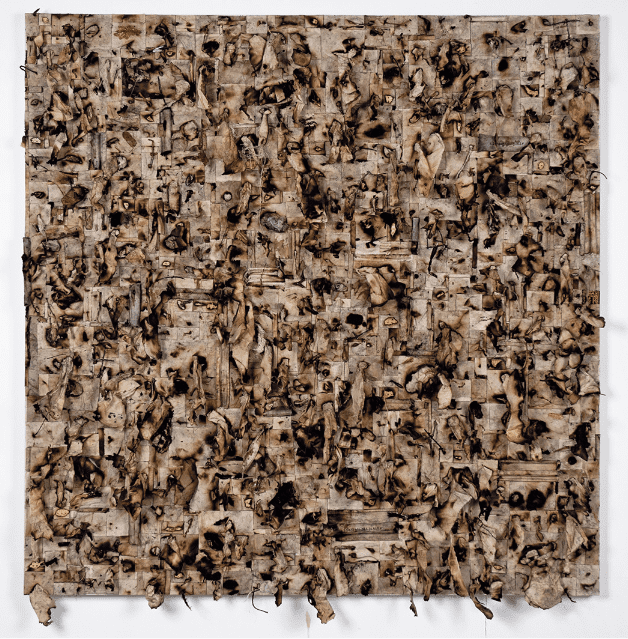Hanaa Mallalah featured in ArtForum
Artist Hanaa Malallah (ASC Grafton Road) has recently been featured in ArtForum’s article UNVANQUISHED: Amin Alsaden on Iraq’s art under two decades of occupation, in their March 2023 issue.
Hanaa has recently completed an exhibition at The Cube, ASC Grafton Road’s project space, with her work filmed and featured by BBC Arabic.
You can find out more about Hanaa Malallah at her website.
A SPLATTERING of black, white, and red binds a mass of darkly clothed brown bodies. Media outlets relish such portrayals of protesters carrying Iraqi flags in the rallies that erupt regularly in Baghdad, indicative of the strife that has beset Iraq in recent years. The images are understandably appealing: They possess a sense of drama, even an epic quality; perhaps those scenes also resonate with a disgruntled world numbed by pervasive injustices. In the same photographs, a colossal structure often appears, one not dissimilar to the demonstrators’ signs, rising above the crowds: the July 14th Monument, colloquially known as the Tahrir or Liberty Monument, a friezelike bronze-and-travertine structure more than 160 feet long, by artist Jewad Selim (1920–1961) and architect Rifat Chadirji (1926–2020).
[…]
Few artists have captured the decimation of Iraqi life by the American-led invasion and by previous conflicts as consistently as Hanaa Malallah (b. 1958), who observed the wrecking of her country in one war after another until she finally left three years into the occupation. Also a close associate of Al Said’s, Malallah has created an extensive body of work predicated on the notion of incineration. She has routinely burned her materials, and has weathered, aged, and distressed her canvases, with the aim of suggesting a general state of decay, of omnipresent death. Shroud IV, 2012, is more like a compressed wall-mounted sculpture than a painting; its dense surface resembles a landscape that has been ruined by a blazing fire. There is an underlying order, a grid of sorts, that modulates the unwieldy pouches of scorched and twisted canvas. Inside the folded fabric, and strewn in between, are little lumps of soil, seeds, small twigs, fragments of amulets, and even parts of taxidermied birds that seem to have been embalmed for some impenetrable burial ritual. This piece speaks to the indiscriminate fury of war, but I also see it as connoting the senseless erosion of the organically and painstakingly built artistic culture of Iraq—a deterioration that Malallah, as a participant in and beneficiary of that culture, witnessed.
Full article available on ArtForum.

Why not share this article?